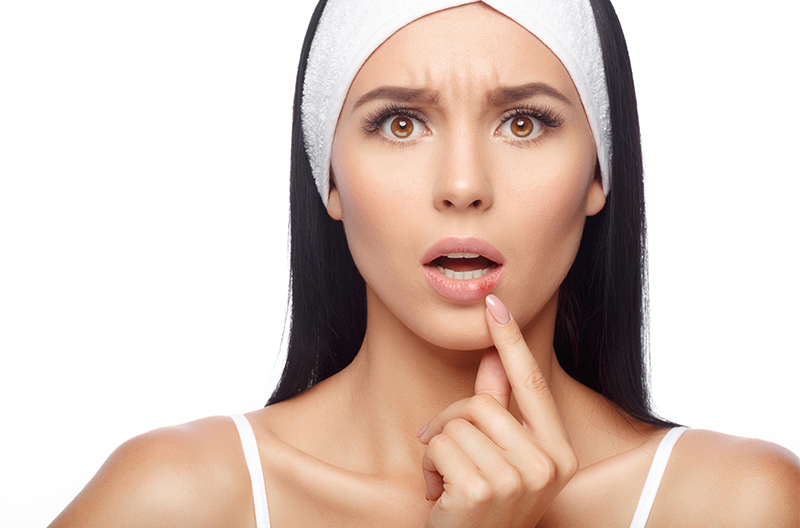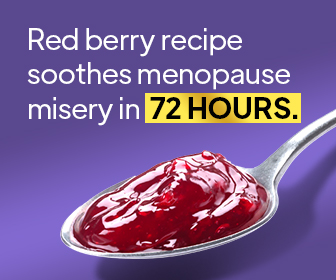Your lips start to tingle. They itch like crazy. You look in the mirror and an awful red mark has begun to form in the corner of your mouth. It’s getting bigger. You know what that means — a cold sore is about to rear its ugly head and ruin your week. If this scenario sounds oh-so-familiar to you, you might be wondering what cold sore treatments you can try. You’ve come to the right place! Within this guide, we will look at what cold sores are, how to treat them, and how to avoid getting them in the first place.
What Are Cold Sores?
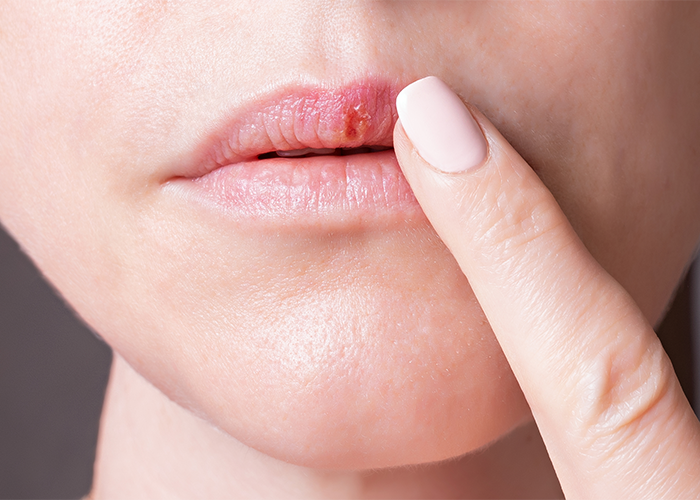
If you’re not sure what cold sores are, we’ve got the answer. These horrid little blisters can be the bane of your life when they crop up. There’s nothing worse than finding that you have a few sores around your lip and mouth area. Let’s take a quick moment to look at what cold sores are and how they may appear on your skin.
The blisters appear around your mouth and are often filled with fluid.[1] Should they break open — when you eat or talk — you may find that the fluid leaks out of them. This in itself can be extremely irritating and painful. Luckily, cold sores are often worse the first time around since your body has yet to develop antibodies to fight off the infection.[2]
That means that if the cold sores come back again, they are likely to be less painful and irritating. You can also use a range of cold sore treatments to help make the experience more bearable and less irritating each time around.
The three main cold sore stages
When you first suffer from a cold sore, you will notice that it changes as it develops. Usually, a cold sore will only last for between one and two weeks.[3] During that period, you will likely find that the sore goes through a series of transformations. To better understand what is happening here, you need to look at the main cold sore stages. Let’s take a look at the three cold sore stages according to the latest research in the area.[4]
1. Redness
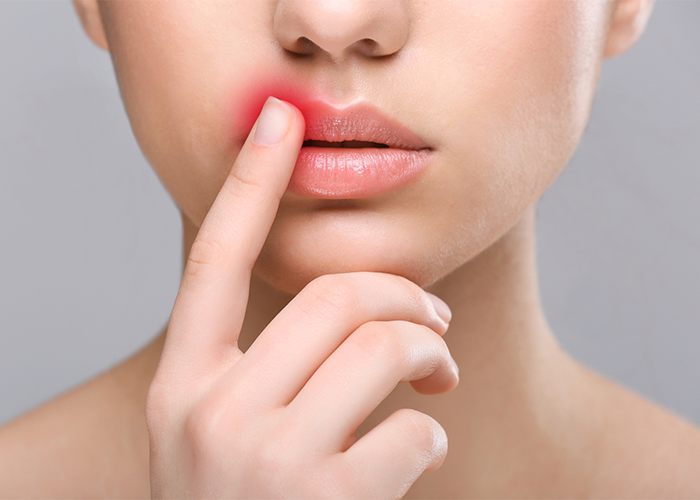
The first of the cold sore stages is redness. A day or two before the sore actually begins to blister, you may start to feel itchy around the area or experience a tingling sensation. The area, which will soon become a blister, may already be inflamed at this point. For that reason, you may see a red or pink color start to appear and become visible over time.
2. Blister
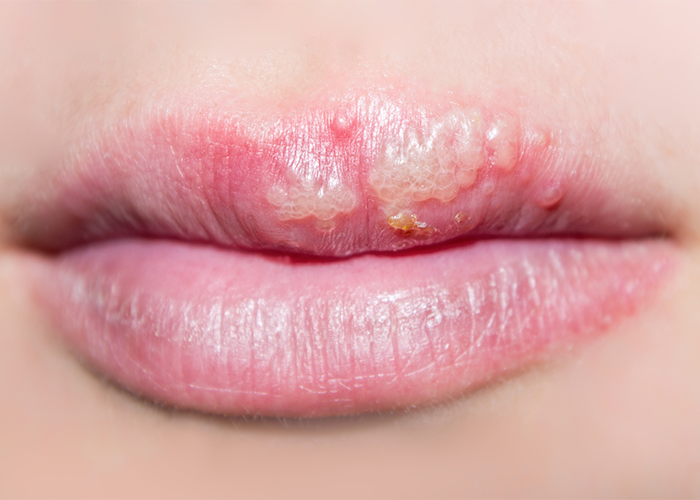
Next, you will find that a blister or even cluster of blisters will begin to appear in the area. Of all the cold sore stages, this one is the most irritating. At this point, the blister is highly contagious and may break when you move your mouth. The blisters are filled with fluid too, which means that you should try to avoid breaking them at all possible. The chances are that the blisters will also be very itchy during this stage too.
3. Crusting
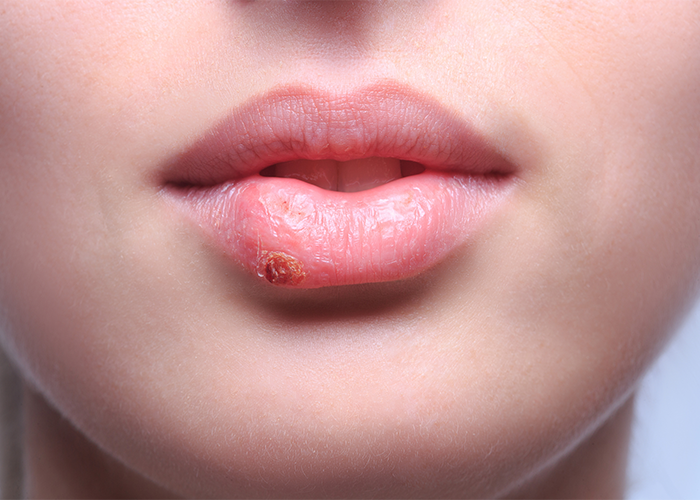
As the blister dries out and begins to heal, you will enter the crusting stage. This is when a yellow or brown crust begins to form where the blister once was. You may be able to reach this stage faster when you use certain cold sore treatments early on. It’s important to understand that the cold sores may still be contagious at this point. For that reason, you will need to avoid contact with people as you could spread the virus.
What Causes Cold Sores?
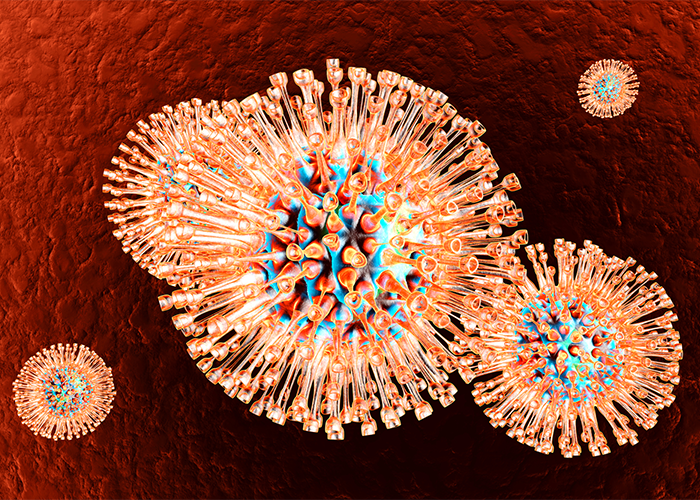
Before we get onto possible cold sore treatments that you might try, it’s first worth understanding what causes it. Cold sores are actually a symptom of the herpes simplex virus (HSV).[5] However, don’t let that idea spook you. Suffering from cold sores on a regular basis is extremely common when you have the virus.
What’s more, more than half of Americans between 14 and 49 have contracted the virus which means that these sores regularly crop up, according to the American Academy of Dermatology.[6] Should you find that you get cold sores, the likelihood is that you will suffer time and time again. The truth of the matter is that some people are chronic sufferers.
If you’re wondering what causes cold sores the first time around, there is quite a simple answer. The most likely reason that you contracted the virus is that you came into contact with someone who already had it. The herpes virus can spread through open blisters and the fluid within them.[7] If your immune system is low or you are rundown, you are also more likely to contract the virus as your body cannot properly protect itself.[8]
While you might be under the impression that cold sores come and go over time, that’s not entirely the case. When the actual sore heals and disappears, the virus stays in the body. That means that, at any given point, the virus could reactivate and you could get cold sores once again. For that reason, it’s important to take care of yourself, try to boost your immune system, and take precautions to avoid activating the sores.[9]
Did you know that more than 50% of Americans between the ages of 14 and 49 have the herpes simplex virus (HSV)?
How to Get Rid of a Cold Sore: Treatments & Remedies
Now that you’re well-versed in what a cold sore is and what causes it, let’s get down to business. How can you get rid of them? As we have already covered here, a cold sore will heal itself within a couple of weeks naturally.[10] However, you can use various cold sore treatments at home to help manage the pain and speed up recovery. Here are six options that you may want to try for yourself if you have a cold sore.
1. Place ice on the cold sore
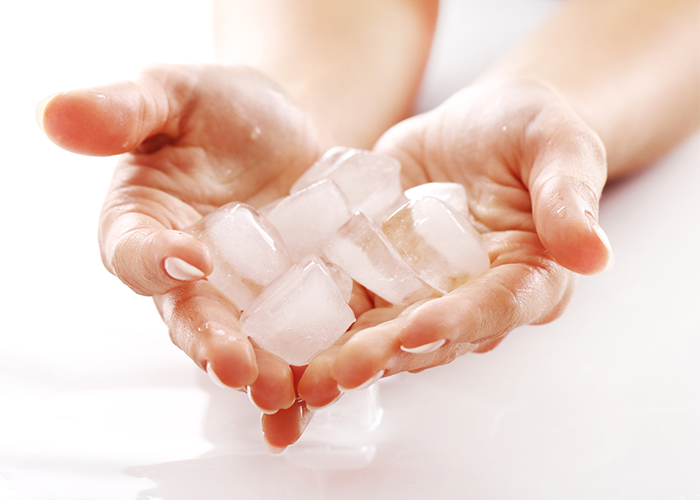
While some cold sore treatments deal with getting rid of the blister, this first remedy is all about pain relief. As we have already covered, cold sore blisters can be irritating and may hurt a great deal. Suffering through the annoyance is one way to go, however, it can be stressful and unpleasant. So, this next tip will give you quick relief.
One report from the American Academy of Dermatology suggests using ice chips on the area.[11] You can either place a compress on the cold sore or suck on some ice to lessen the pain and itchiness. The great thing about these cold sore treatments is that they are low-cost and will give you the results you’re looking for in an instant. Simple.
2. Use antiviral cold sore cream
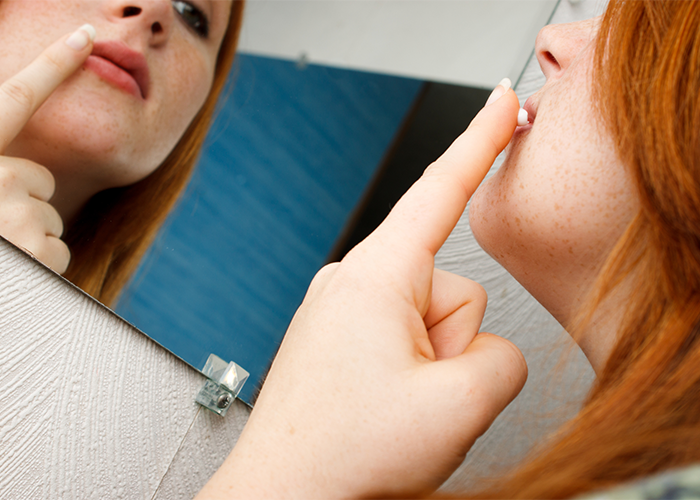
Want to speed up your recovery time? During the initial cold sore stages, when the area is red and you can feel some tingling, you should apply antiviral cold sore cream. You may want to see your doctor and get a prescription for this medication or look for over the counter options instead. Either way, acting fast and using this cream could be key.
Of course, there are a great many cold sore treatments and creams on the market. Needless to say, some of the creams will be more effective than others. That’s why it’s crucial that you read the description of any medication you choose. The American Academy of Dermatology recommends looking for products that contain either docosanol or benzyl alcohol as these will be the most powerful options.[12]
3. Avoid messing with your cold sore
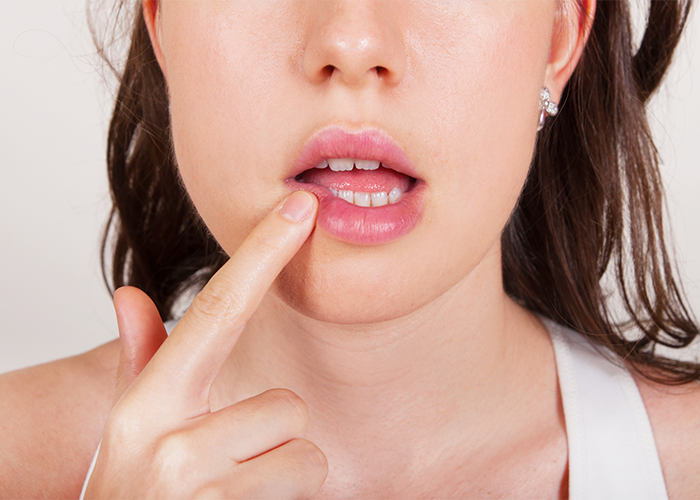
As the cold sore will be itchy, you may be tempted to mess with it. Avoid scratching or touching the blister, at all costs. The blisters are contagious and could easily spread to various parts of your body or face. Plus, by interrupting the blister with your hands, you could infect it with further germs or stop the healing process. That could mean that you suffer from the cold sore for much longer than you otherwise would. Yikes.
4. Regularly clean the area
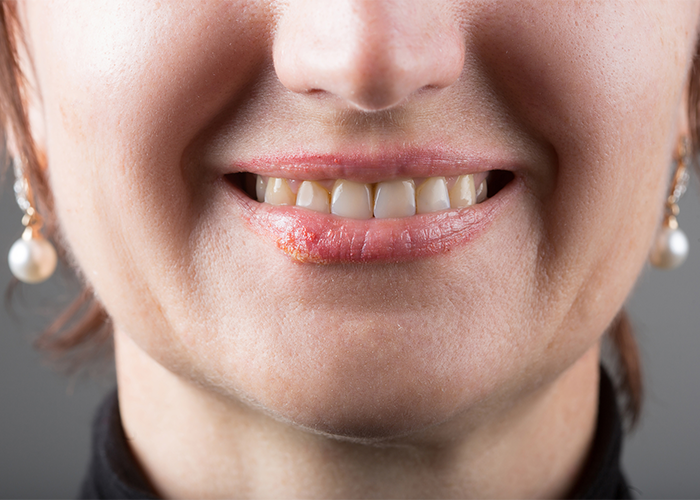
Of course, one of your main aims, when we talk about cold sore treatments, is to avoid the infection getting any worse. For that reason, one of the things you have to do is clean the area on a regular basis. Use a clean, cold, wet towel and place it on the cold sore for between five and 10 minutes at a time.[13] This tip serves a couple of key purposes.
First of all, it ensures that the area remains as clean as possible, which means that the cold sore should not get any worse. It should also help to take away some of the redness and irritation that you experience. Make sure that you wash the towel well between sessions so that you can kill off any germs or bacteria there.
5. Steer clear of acidic foods
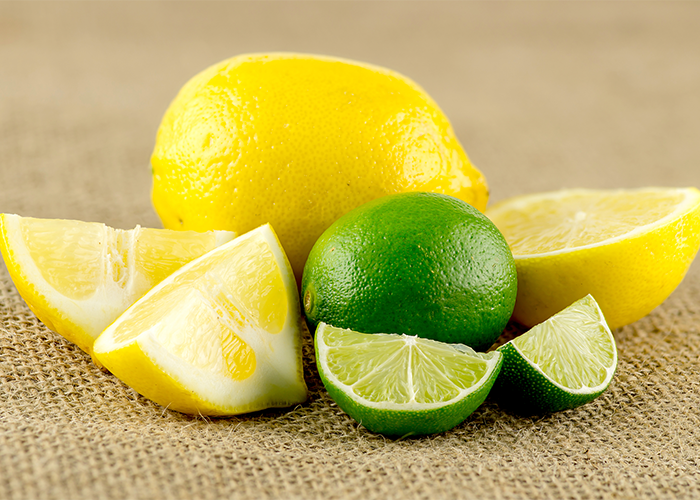
While acidic foods won’t make the cold sore any worse, you may find that they cause you needless pain. One of the more holistic cold sore remedies out there is to steer clear of certain food groups.
The American Academy of Dermatology suggests avoiding foods including grapefruits, oranges, and tomatoes.[14] You may also want to stay away from especially spicy or salty foods, such as curries and potato chips. Try eating plain foods while you have a cold sore so that you don’t cause yourself any extra irritation.
6. Apply some aloe vera gel
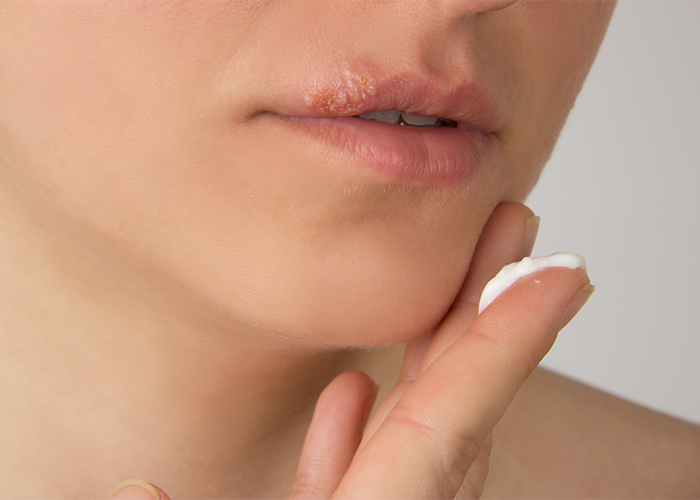
Using some aloe vera gel is one of the simplest cold sore treatments and could be one way to deal with the issue. Luckily, you can buy aloe vera gel from most health stores or online, and so it’s easy to get your hands on. While there isn’t any direct research linking this gel to getting rid of cold sores, there’s a variety of reasons you may choose to use it as a holistic home remedy for the blisters when they arise.
Research published in the US National Library of Medicine suggests that the aloe vera plant is rich in both anti-inflammatory and antiviral properties.[15] The report also links the plant to a boost in the immune system.[16] All of the above properties could aid your body in fighting off the herpes virus when it is active. That may mean that using the gel speeds up your recovery time. As though that weren’t enough, the gel is soothing and cooling, which means that it will take away some of the irritation.
Simple Tips to Avoid Getting One in the First Place
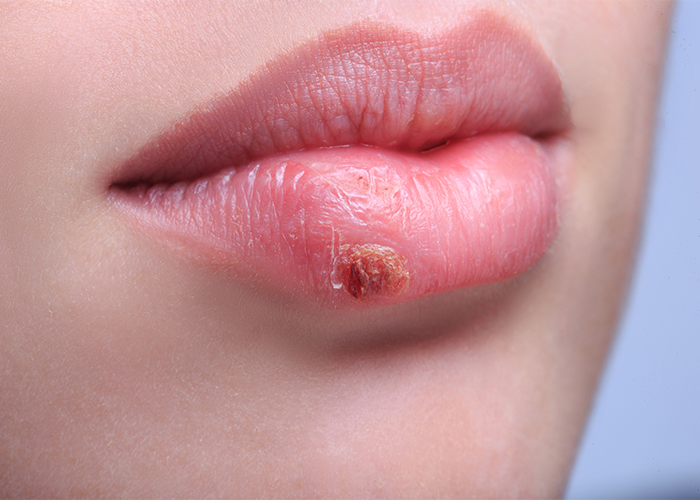
While there are cold sore treatments out there, you should try to avoid getting them in the first place. After all, who wants to go through the sheer irritation of dealing with cold sores? It’s worth noting that there’s a range of risk factors when it comes to developing cold sores. So, if you do what you can to avoid these issues, you could lower your chances of getting one. Without further ado, here are five simple tips you can try that will mean you get fewer cold sores.
Take care of your lips
Damaged or cracked lips could be a trigger when it comes to activating cold sores.[17] For that reason, you should be sure to take good care of your lips on a regular basis. During the winter, thanks to the cold weather and wind, you may find that your lips become cracked and dry. This is a natural occurrence but one you can’t ignore.
Ensure that caring for your lips is a part of your everyday skin care routine. You can use a range of lip balms to avoid this problem worsening and leading to other problems. You may also want to avoid licking your lips or using some chemical-heavy lipstick brands as doing so could exacerbate the issue.
Keep safe in the sun
When we’re talking about what causes cold sores, we can’t overlook UV rays from the sun. These rays can cause damage to your skin and may be a factor when it comes to the development of cold sores.[18] Protecting yourself is the only way to go. Whenever you are in direct daylight, you should wear sunscreen on your face and body. You should also avoid spending too much time in direct sunlight as it could be seriously harmful.
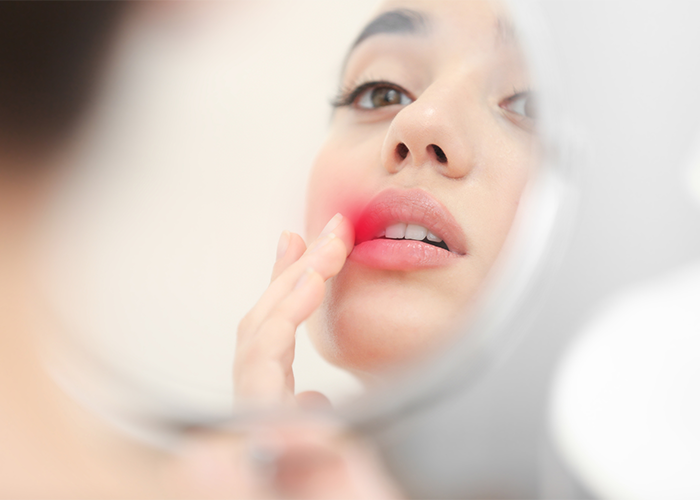
Avoid emotional distress
While we can all feel distressed from time to time, long-term emotional distress could be a real risk factor. Research suggests that this issue could activate the herpes virus, meaning that you have regular cold sore breakouts.[19] To try to avoid the problem, you may want to up your self-care routine so that you can create more emotional resilience.
You can’t always control the things that happen to you but, through self-care, you may have a calmer attitude when dealing with them. If you regularly find yourself emotional and stressed out, it could be worth giving this aspect of your wellness some real thought. When you start to take mastery of your own feelings, you are the one in control.
Improve your home cleanliness
If you live with someone who also regularly suffers from cold sores, you may want to improve your levels of cleanliness around the home. For example, you can pass cold sores to one another through using the same towels, dishes, and cutlery.[20] That means that sharing is not always caring. You may want to have separate towels and plates that you use on a regular basis to avoid this problem completely.
Another thing that you could do is ensure that you regularly wash your towels and use antibacterial dishwashing liquid too. Doing so will mean that it’s less likely that you will pass germs and bacteria to each other. Taking these small precautions in your home may make all the difference when it comes to how regularly you get cold sores.
Boost your immune system
Since cold sores tend to occur when your immune system is weak, you may want to try small ways in which you can boost it.[21] Ensuring that you lead a healthy lifestyle is one way in which you could keep your immune system as strong as possible. For instance, you may want to add extra superfoods to your everyday diet. The foods may give you the vitamins that your body needs to become stronger and protect itself from viruses.
Research from Harvard Health also suggests that you avoid nasty habits such as smoking, failing to get enough sleep, and drinking too much alcohol.[22] The report also suggests that you can boost your immune system by minimizing stress levels, exercise regularly, and maintain a healthy weight.[23] Doing all that you can to keep your immune system working well is an absolute must for all areas of your health.
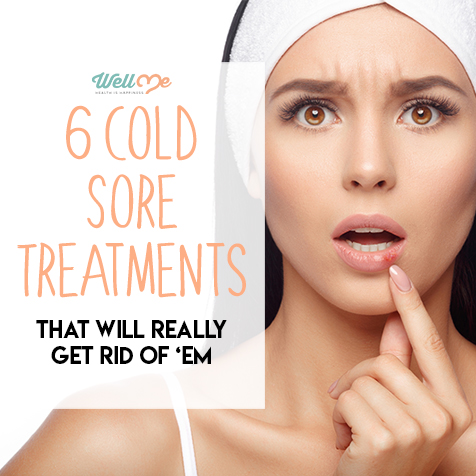
Conclusion
Cold sores can be a real pain — literally! However, you shouldn’t let them take over and stress you out. Using some of the best cold sore treatments as soon as you feel that tingle is the answer to the problem. This guide should have given you an overview of the options you can try. Use these remedies sooner rather than later for the best results. Good luck!
References
- [1] https://www.ncbi.nlm.nih.gov/books/NBK525782
- [2] https://www.ncbi.nlm.nih.gov/books/NBK525782
- [3] https://www.ncbi.nlm.nih.gov/books/NBK525782
- [4] https://www.ncbi.nlm.nih.gov/books/NBK525782
- [5] https://www.aad.org/public/diseases/contagious-skin-diseases/cold-sores
- [6] https://www.aad.org/public/diseases/contagious-skin-diseases/cold-sores
- [7] https://www.ncbi.nlm.nih.gov/books/NBK525782
- [8] https://www.ncbi.nlm.nih.gov/books/NBK525782
- [9] https://www.ncbi.nlm.nih.gov/books/NBK525765/
- [10] https://www.ncbi.nlm.nih.gov/books/NBK525782
- [11] https://www.aad.org/public/diseases/contagious-skin-diseases/cold-sores#tips
- [12] https://www.aad.org/public/diseases/contagious-skin-diseases/cold-sores#tips
- [13] https://www.aad.org/public/diseases/contagious-skin-diseases/cold-sores#tips
- [14] https://www.aad.org/public/diseases/contagious-skin-diseases/cold-sores#tips
- [15] https://www.ncbi.nlm.nih.gov/pmc/articles/PMC2763764
- [16] https://www.ncbi.nlm.nih.gov/pmc/articles/PMC2763764
- [17] https://www.ncbi.nlm.nih.gov/books/NBK525782
- [18] https://www.ncbi.nlm.nih.gov/books/NBK525782
- [19] https://www.ncbi.nlm.nih.gov/books/NBK525782
- [20] https://www.ncbi.nlm.nih.gov/books/NBK525782
- [21] https://www.ncbi.nlm.nih.gov/books/NBK525782
- [22] https://www.health.harvard.edu/staying-healthy/how-to-boost-your-immune-system
- [23] https://www.health.harvard.edu/staying-healthy/how-to-boost-your-immune-system

